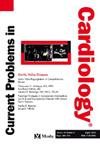Trends in cardiovascular risk in Peru: A 10-year population-based analysis (2015–2024)
IF 3.3
3区 医学
Q2 CARDIAC & CARDIOVASCULAR SYSTEMS
引用次数: 0
Abstract
Background
Data on national trends in cardiovascular risk in Latin America are limited. We aimed to evaluate changes in estimated 10-year cardiovascular risk in Peru between 2015 and 2024, and assess disparities by sex, age, residence, and region.
Methods
We conducted a cross-sectional analysis using nationally representative data from the Peruvian Demographic and Health Survey. Adults aged 40–74 years with complete risk factor data were included. Ten-year cardiovascular risk was estimated using the 2019 WHO non-laboratory prediction charts for Andean Latin America. Trends in mean absolute risk and the proportion of individuals at ≥high risk were assessed using joinpoint regression models, overall and by sex, age group, area of residence, and region.
Results
Among 104,617 participants, mean estimated 10-year cardiovascular risk declined from 5% in 2015 to 4.4% in 2024 (average annual percent change [AAPC] −2.3%; 95% C: −3.2 to −1.5). The prevalence of ≥high cardiovascular risk decreased from 10.3% to 8.5% (AAPC −3.2%; 95% CI −5.0 to −1.6). Risk declined significantly among women, younger adults, and both urban and rural populations, but remained unchanged in men and older adults. Regional trends were heterogeneous, with the steepest reductions observed in Amazonas, Ica, and Ayacucho.
Conclusions
Although a slight decline in estimated cardiovascular risk was observed in Peru over the past decade, the change may have limited clinical relevance. These trends emphasize the need for stronger, equity-focused efforts to reduce the burden of cardiovascular disease at the national level.
秘鲁心血管风险趋势:基于人群的10年分析(2015-2024)
背景:关于拉丁美洲国家心血管风险趋势的数据有限。我们的目的是评估秘鲁2015年至2024年间10年心血管风险的变化,并评估性别、年龄、居住地和地区的差异。方法采用秘鲁人口与健康调查中具有全国代表性的数据进行横断面分析。年龄在40-74岁之间且有完整危险因素数据的成年人被纳入研究对象。使用2019年世卫组织安第斯拉丁美洲非实验室预测图估计了十年心血管风险。使用联合点回归模型评估总体和按性别、年龄组、居住区域和地区划分的平均绝对风险趋势和≥高风险个体比例。在104,617名参与者中,平均估计10年心血管风险从2015年的5%下降到2024年的4.4%(平均年变化百分比[AAPC] - 2.3%; 95% C: - 3.2至- 1.5)。≥高心血管风险的患病率从10.3%降至8.5% (AAPC为- 3.2%;95% CI为- 5.0至- 1.6)。风险在女性、年轻人以及城市和农村人口中显著下降,但在男性和老年人中保持不变。区域趋势是不均匀的,亚马逊、伊卡和阿亚库乔地区的降幅最大。结论:尽管秘鲁在过去十年中观察到心血管风险估计值略有下降,但这种变化可能具有有限的临床相关性。这些趋势强调需要加强以公平为重点的努力,在国家一级减轻心血管疾病负担。
本文章由计算机程序翻译,如有差异,请以英文原文为准。
求助全文
约1分钟内获得全文
求助全文
来源期刊

Current Problems in Cardiology
医学-心血管系统
CiteScore
4.80
自引率
2.40%
发文量
392
审稿时长
6 days
期刊介绍:
Under the editorial leadership of noted cardiologist Dr. Hector O. Ventura, Current Problems in Cardiology provides focused, comprehensive coverage of important clinical topics in cardiology. Each monthly issues, addresses a selected clinical problem or condition, including pathophysiology, invasive and noninvasive diagnosis, drug therapy, surgical management, and rehabilitation; or explores the clinical applications of a diagnostic modality or a particular category of drugs. Critical commentary from the distinguished editorial board accompanies each monograph, providing readers with additional insights. An extensive bibliography in each issue saves hours of library research.
 求助内容:
求助内容: 应助结果提醒方式:
应助结果提醒方式:


